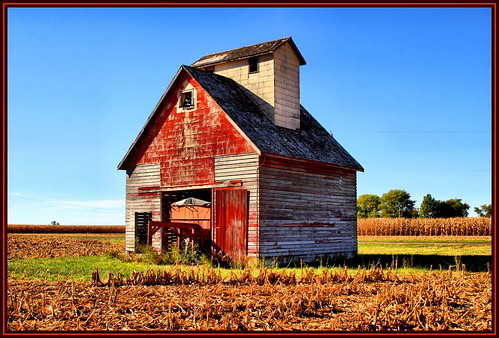
Crib
NOTE: This article of mine appeared on Seeking Alpha August 17, 2009.
How will this global economic crisis affect agriculture, especially here in the U.S.?
First, this current market rally is psychologically masking some major underlying fundamental problems and mathematics which have been ignored but have not gone away. This is causing irrational optimism for the time being, as compared to where we will most likely find ourselves soon, and especially a few years from now. If and when the market corrects, we will most likely see more of those deflationary positive feedback loops everywhere, including agriculture.
Commodity prices have been heading down for about a year now to a level averaging about 25% lower. For agricultural commodities, this is exacerbated by strong production numbers this year, especially of corn, wheat and soybeans. But it is also related to less export demand. If the dollar strengthens, which it could with renewed deflationary fears, expect even fewer exports.
The following are year-over-year changes in commodity prices:
(Sources: Wikinvest and Marketwatch)
Corn -41%
Soybean -12%
Wheat -44%
Rice -17%
Oats -47%
Cotton - 2%
Sugar + 8%
Beef -20%
Pork -51%
Dairy -19%
Globally as well as in the U.S., people are choosing lower priced foods. Restaurants are hurting because there is more cooking at home. Lower priced meats are selected. Food without meat is being selected. Sadly, less demand for dairy products has meant the end for many dairy farms. The input costs of dairy production never went down, but the product sales prices and exports sure did. Could other farming sectors follow?
Some of the positive feedback loops we are already seeing, and I'd expect to see more of, are decreases in production, fewer purchases of farm equipment and products, lower land prices, and lower farmland rent prices. It may also lead to planting the less expensive crop choices which is balanced with the expected profit potential of those choices, sometimes credit-dependent.
Ethanol continues to be in trouble, as it has always been an insolvent industry if not supported by the taxpayer. The chance of greater government support is slim with the nation's growing budget deficits and debt. Lower corn prices help but lower oil prices hurt profit margins. Cellulosic ethanol will need a price support of $90 oil, or so they say. Ethanol demand is also down, because overall demand for fuel is down. Ethanol was the pride and hope for the future of corn producers and the Midwest, in general, a short time ago.
Credit availability is in flux for agriculture. The USDA is attempting to offer low interest rate loans to help. Otherwise, interest rates appear to be headed higher.
Since oil prices are lower, and industrial agriculture is reliant upon fossil fuel inputs, this lower priced commodity has helped agriculture. (Oil is down 41% from a year ago.)
Perhaps less significant in dollar amounts but important as a lifestyle choice to many people, it is quite possible that the enthusiasm for urban gardening combined with the gravitation towards lower priced food choices will hurt the local organic producers, CSA's and farmer's markets across the country beginning this year.
On a global level, there is fear of food price inflation and supply problems. World population is expected to reach 7 billion people in 2011. The current price of rice and sugar is higher than the average over the past two decades while wheat is at its average. In the developing nations agriculture comprises a much greater percentage of GDP. In this global economic downturn less food aid is being offered by some sources. India's poor monsoon rainfall this year contributed to lower production of sugar and rice.
As this global economy further corrects, leading to more careful discretionary spending of individuals and nations, over time I'd expect a re-evaluation of crop choices in the U.S. that involve lower inputs with less emphasis on meat and corn production, and more on wheat, soy and other beans, and rice using lower impact farming techniques such as no-till and less (expensive) irrigation. Production output could fall considerably. Livestock changes might trend towards smaller livestock and more grazing. Included in this picture would be more employment directly related to agriculture, as in the past.
Regional and local food production will take on a more important role, especially for fruits and vegetables, and industrial agricultural production will focus more upon food staples. Combined with this picture, it is possible that growing grains on a commercial scale will become even more pronounced as long as the system is fossil fuel based. That is, huge farms owned by corporations and private investors would use employees with large equipment and efficient production methods which would further decrease their overall costs, as compared to the smaller farmer, who can't compete with that scale with high risk and low profit margins.
In conclusion, energy prices and the overall health of the global economy will dictate much of what is to come in agricultural commodities. The entire sector will become a larger percentage of our total GDP, as our overall standard of living diminishes in that "new normal" of very low or a negative growth economy.